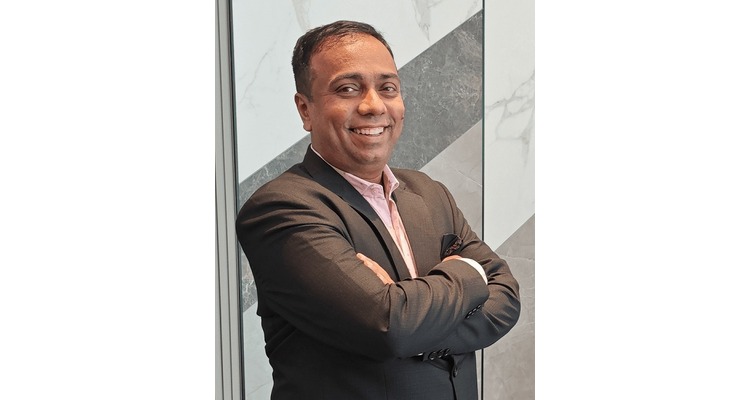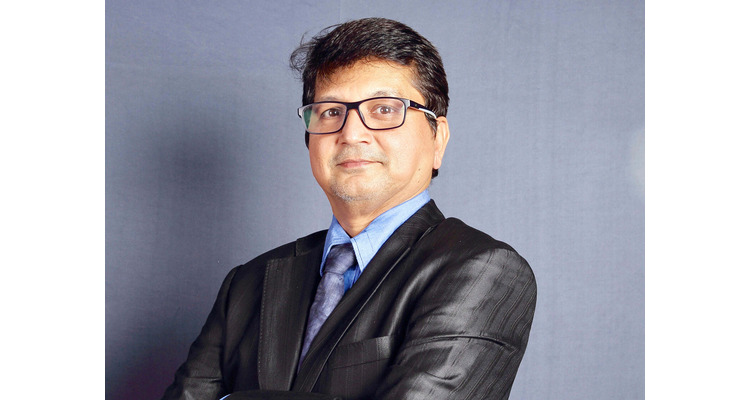Can you brief us about your journey in Blusteak Media and how does your personal values align with our company’s mission and culture?
My journey with Blusteak began with Dude, a meme page I started with my brother that grew to over 4 million followers. That experience gave us a deep understanding of how people consume and engage with content. It also made us realise the potential of storytelling in the digital space – and that’s what led to the birth of Blusteak Media.
We officially launched the agency in 2017 from Kottayam, a tier-3 town in Kerala, with a belief that geography should never limit creativity or ambition. Today, we’re a 65-member team working with brands across 14+ countries, including India and the GCC.
Personally, I’ve always valued creativity, consistency, and clarity. These values reflect in how we build our campaigns – by making marketing more human, more relatable, and performance-driven. Staying grounded while chasing global impact has always been core to both my personal journey and Blusteak’s culture.
What metrics would you prioritise when evaluating the success of a digital campaign and how do you approach experimenting with new marketing channels or techniques?
When evaluating a digital campaign, I always begin by asking: What was the core objective? Metrics should align with that. If it’s a performance campaign, I focus on CAC, ROAS, and cost per result. For branding, engagement rate, brand recall proxies like saves/shares, and qualitative sentiment matter more. We avoid vanity metrics unless they support a deeper KPI.
We also track retention and funnel progression in longer-term campaigns – not just how many people clicked, but whether they stayed, converted, or came back.
When it comes to experimenting with new channels or formats, we adopt a lean test-and-learn model. I usually allocate a small budget to run controlled experiments – with clear hypotheses, creative variations, and tracking. We observe early signals, iterate fast, and only scale what shows potential.
New channels are tested not just for trend value, but whether they fit the brand’s voice and audience context. A trend may get reach, but without relevance, it won’t create value.
How do you optimise Ad campaigns during seasonal drops in performance?
It’s always a data-driven approach. The first step is to identify what’s not working. We break down every part of the funnel – from ad angles and creatives to the landing page and backend conversion data.
We experiment with different ad angles to improve engagement and test multiple versions to see what resonates. We also monitor CPMs and other key metrics to spot early signs of underperformance.
But more importantly, we investigate where exactly the bottleneck is. Is it a product problem? An offer problem? A communication mismatch? Poor retention? Or something technical like page load time or pixel setup? Sometimes the issue isn’t the ad itself, but what comes after the click.
Once we isolate the root cause, we run focused experiments around that specific area – whether it’s a new landing page structure, a better offer, or tweaking the messaging. It’s about constantly testing, learning, and fixing the real problem rather than just patching the symptoms.
Can you describe a storytelling framework you use for social or Ad campaigns especially while handling branding for a legacy company entering the digital space?
The foundation of our storytelling approach is consistency in tone. Whether a brand is serious, informative, or humorous – the tone must remain consistent across all formats and platforms. That’s non-negotiable. It builds familiarity and trust, especially crucial for legacy brands that have established offline credibility.
But consistency doesn’t mean rigidity. On social media, experimentation is essential. You can’t say you want growth but resist trying new content formats or narratives. Virality is often the result of repeated experimentation and learning from data – what’s worked before, what trends are rising, and where the audience is paying attention.
We treat content creation like a lottery: out of 10 or 50 posts, even one going viral can bring the kind of brand traction that rivals a two-month performance campaign.
With legacy brands, the challenge is greater. There are hierarchies, traditional brand guardrails, and often a gap in understanding how today’s platform’s function. So, part of the storytelling process is also internal, helping brand managers and senior leadership understand the dynamics of modern content and showing them through data and proof that we know what we’re doing. Gaining their trust is often half the battle, and we approach that with education, patience, and clarity.
How do you incorporate trending formats without diluting a brand’s identity and ensure consistency in brand tone across different digital platforms?
The key is not to jump on every trend blindly. Just because something is going viral doesn’t mean it fits your brand. Before participating, we ask a few critical questions: Why is this trend happening? Does it align with the brand’s values? Is it light-hearted or could it be harmful or hypocritical for the brand to engage in?
We believe in having a clear SOP to filter trends. This helps us decide whether the trend complements the brand’s identity or dilutes it. Some trends may be fun but tone-deaf for certain categories – so we don’t touch them, even if the format is tempting.
At the same time, we encourage platform-native creativity. That means the core message remains consistent, but the way it’s presented adapts to each platform – whether it’s Instagram Reels, YouTube Shorts, or LinkedIn carousels. The goal is to maintain tone while exploring the trend in a way that feels true to the brand and adds real content value, not just clout-chasing.
What techniques do you use to present marketing results to clients effectively?
It all starts with expectation management. Every client view success differently – some prioritise creativity and brand presence, others focus strictly on performance and measurable sales. So, from day one, we try to understand what lens the client is using to evaluate us.
If it’s a creativity-first client, we align our reporting around content performance – engagement, virality, brand consistency, and innovation within guidelines. If the focus is on sales or conversions, then we set KPIs around performance metrics like ROAS, CAC, and lead quality, and double down on real-time optimization and ad testing.
Once expectations are aligned, we maintain transparent communication through weekly or bi-weekly updates and structured monthly reports. These aren’t just data dumps – we ensure they tell a story: what’s working, what’s not, and what’s next. This way, clients not only stay informed but also trust that there’s strategy and intent behind every campaign decision.
Enjoyed this interview? Now, imagine yours. Write to:
editor@thefoundermedia.com




